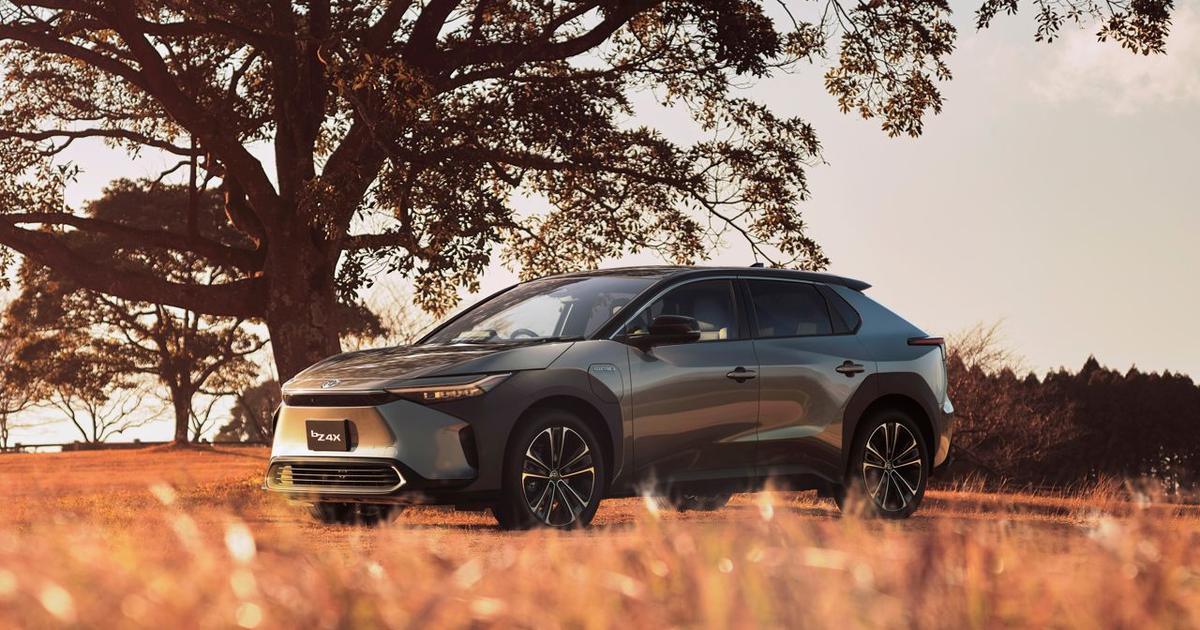A pioneer of hybrid technology with the Prius in 1997 and a proponent of the hydrogen-powered fuel cell, Toyota is stepping into the flourishing electric car market.
Admittedly, the world number 1 does not intend to lag behind, but the immaturity of technology and consumers calls for some caution.
The major program unveiled last winter shows that the Japanese will have to be reckoned with from the second half of the decade.
Like many manufacturers before it, Toyota has found it necessary to house its range of battery electric vehicles under a new label: bZ for Beyond Zero.
Toyota
Proof that the Japanese manufacturer does not intend to cut corners, the first model of the new bZ family will only be produced at 16,000 units in 2022;
35,000 in 2023. Baptized bZ4X, this model developed with Subaru is an SUV exceeding the Rav4 by almost 100 mm (4.69 m) and equipped with a generous wheelbase of 2.85 m, i.e. all the same 160 mm more than the hybrid SUV.
Its style is in line with the manufacturer's latest achievements.
The main original features of this balanced silhouette concern the pointed bonnet, the large black spots represented by the plastic panel stretching from the front wheel arches to the slender headlamps, as well as the horizontal light strip connecting the two rear lights whose light signature forms a paperclip.
Complex ergonomics
Denis Miller
The bZ4X is based on the modular eTNGA platform developed for a multitude of electric vehicle architectures.
Two versions are on the program: traction with a 204 horsepower permanent magnet motor installed at the front or four-wheel drive with a second 80 kW machine placed on the rear axle to deliver a cumulative power of 217.5 horsepower.
In this case, the torque gains 70 Nm to deliver 336 Nm. Both versions accommodate a 71.4 kWh battery integrated into the chassis and contributing to the rigidity of the whole.
It is a little worse than the Volkswagen ID.4 whose accumulators have a capacity of 77 kWh.
In return, Toyota announces a controlled weight of 1920 kg for the entry-level version, 2005 kg for the all-wheel drive model of which we were able to try a pre-series version.
Although the lines are now known, the bodies of our vehicles still wore camouflage.
What was not the case of the cockpit.
Toyota
Peugeot's i-cockpit seems to have inspired Toyota designers with a steering wheel that seems to form a single block with the digital instrument cluster located a good distance away.
This arrangement, which dispenses with the use of the head-up display, determines a perfectible driving position.
When you are used to driving the seat low to the ground, the rim of the steering wheel conceals part of the screen, unless you are driving with the steering wheel on your knees.
In the center, sits a large 12.3-inch touch screen with neat ergonomics.
Toyota had the good idea to keep the air conditioning controls separate.
On the other hand, the multiplication of disparate materials is paid for by a perceived quality barely above the average.
Despite the presence of 30 liters of storage,
we will also be surprised at the absence of a glove box, while the electrical architecture reduces the constraints in terms of space.
This is true for the really generous rear seats.
As often, the central square is unfortunately not the most welcoming.
The 452-litre boot reinforces the family vocation of the first model in the bZ family.
Denis Miller
Toyota's first electric vehicle boasts a range of 422 km in the 4-wheel drive version (450 km in traction).
We couldn't verify it, but the consumption on the motorway shows that reaching 300 km will be a feat.
The optional solar roof would provide 1,800 km of additional autonomy over a year.
Performance in terms of recharging is not exceptional, the bZ4X not accepting a power greater than 150 kW.
Going from 10 to 80% would take thirty minutes.
With an on-board charger limited to 6.6 kW, charging the battery from a household outlet takes eleven hours.
The adoption, at the end of 2022, of an 11 kW on-board charger will reduce the wait to seven hours.
A choice that stems from electrical technology.
Repeated high-speed charging is detrimental to battery life.
Denis Miller
The performances are in the average of the category and we will especially remember from this SUV its ability to think outside the box.
With a ground clearance of 210 mm and the various programs of its X Mode all-wheel drive developed with Subaru, the bZ4X is capable of evolving on a rough road, getting out of the trap of a muddy track, crossing a ford up to at a depth of 500 mm, to multiply bridge crossings and to slide down a slope without touching the pedals.
Returning to the asphalt, we discover that the “one pedal” function does not dispense with using the brakes to stop.
The dosage of this one appeared to us to be perfectible.
As for the direction, a little more firmness would not have harmed the approval.
This question should be settled with the arrival in 2023 of a by-wire management.
Denis Miller
Finally, on the price side, this electric SUV should be just below 45,000 euros (excluding bonuses) but Toyota communicates above all on rent.
It would start at 399 euros per month over thirty-six months and 30,000 km, after a first payment of 13,450 euros.

